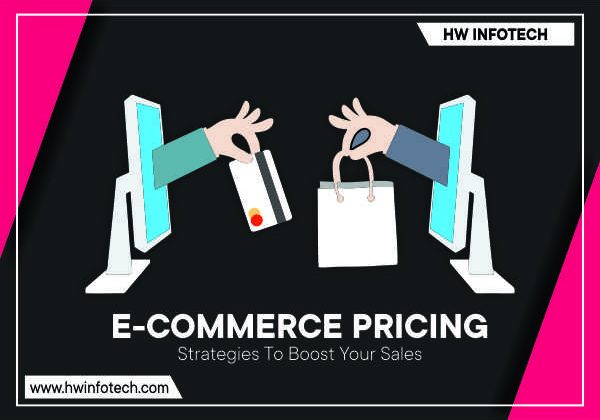
The E-Commerce vendors may possess an intriguing website with latest trends and modern features. However, the focal deciding factor that will run your website is the pricing policy. The prices of your products will determine your sales, the generation of the cash and profits, and the expenses that need to be covered.
Even if you are selling your products on E-Commerce platforms like Amazon, Flipkart, Alibaba, or Shopclues, then also the business owners need to have a specific pricing strategy. This will not only help in keeping competitive pricing but also ahead of your competitors. A study reveals that 81% of shoppers conduct online research before making purchases. Therefore, pricing is the foundation on which your sales and profitability depend.
Why E-Commerce Pricing Strategy is Essential?
It is vital to work upon your pricing policy in order to uplift your brand and attract organic traffic. Your strategy must not include any loopholes that may damage your online reputation. In order to leverage your profit and pull more consumers to your website, seek these significant E-Commerce pricing strategies:
- Market-Oriented or Competition-Based Pricing
This pricing approach depends upon the market conditions and prevailing competition. In this pricing strategy, the E-Commerce vendors see the prices of similar products offered in the market before deciding their own products prices. A study reveals that there are more than 12 million E-Commerce stores on the internet but somewhere nearly 650,000 generates revenue.
The online businesses can take the support of the price-tracking tools that will provide full information about the competitor’s pricing and the latest deals. However, market-oriented pricing helps in saving the company from any kind of price competitions. By mingling it with cost-based pricing, you will not only set your costs but the sales price too. It is vital to carry out the full market research in order to stay ahead of the competitors and offer the best to the consumers.
- Psychological-based Pricing Strategy
The psychology of the customer is always pointed out to why they should buy this product. What is unique about this product? Why the company is selling this product to me? Many such questions do revolve in the mind of the consumers while watching out the products online.
Although, there are many psychological pricing policies that the marketers seek an important one is the “Number 9 Pricing” or the “Charm Pricing.” Like, you can rate your product like $3.99, $99, etc. This realizes the brain function that the product is cheaper. Apple is the finest example here in a way it has placed the prices of its MacBook Pro using the Charm Pricing. The sellers can use this policy not only on the high-ticket items but also on any item priced for the immediate users.
- Free Products and Shipping based Strategy
Most of the E-Commerce vendors offer free products to the customers where they only encourage them to pay shipping cost. This policy works well on major E-Commerce platforms or sellers can sell it through their own websites too. This approach is usually followed by the ‘Dropshippers’ (who purchases products from the third-parties at cheaper rates and these parties only pack and ship the products directly to the consumers).
These products are cheap, and the seller can afford to sell it if the buyers are ready to pay the shipping cost only. This pricing plan helps to lure users to your store to get the “Free+ shipping based products.” This can also increase the customer’s curiosity to buy other products from your online store too. One thing worth noting here is that do not annoy your site visitors by keeping higher shipping cost as you need to be transparent about the actual shipping cost a customer has to bear.
- Using the Cost-Based Pricing Policy
It is the most prevalent form of pricing policy where the consumers mostly assume the prices of the products. Under this, the vendor marks up the pricing a dollar or percentage above the manufacturer price offered. This pricing strategy mostly involves the:
- Margin Pricing: It is determined by seeking the difference between the selling price and the cost of goods sold to see the profitability.
- Markup Pricing: It usually involves the difference between the selling price and the original cost of the product.
- Planned profit pricing: It includes the overall profit the company wants to make on sales of the specific product. After this, they can set up the price of each individual unit.
It is indeed vital to keep the prices that the customers can happily pay. The sellers need to put some market research before determining the cost of each product by keeping their profit share aside too. You need to focus on the value of the product also along with the cost.
- Anchor Pricing Strategy
Under this policy, the value of the product is shown by anchoring it to the next product. Here, the cost price, as well as the selling price, is displayed for the customers to know how much they will be saving on a particular product.
Like, if you are selling a white linen blend shirt from Polo Ralph Lauren at £32, showing its reduced price that is £39.99 and anchoring to its original registered retail price or RRP of £109, then it is clear to the customers that they are getting a saving of up to 71%. This pricing policy works well for the smaller E-Commerce vendors who are offering a good reduction on the original price of the branded products too. This leads to consumer satisfaction also.
Final Words
A right pricing strategy will ascertain the failure of your E-Commerce store. This can make or break your online business market. The E-Commerce vendors who have decided on their pricing policies and want to get a marketplace like Amazon or Flipkart, then they can get the clone script for Amazon and Alibaba from HW Infotech. You can reach out to our experts for consultation and advice too.
